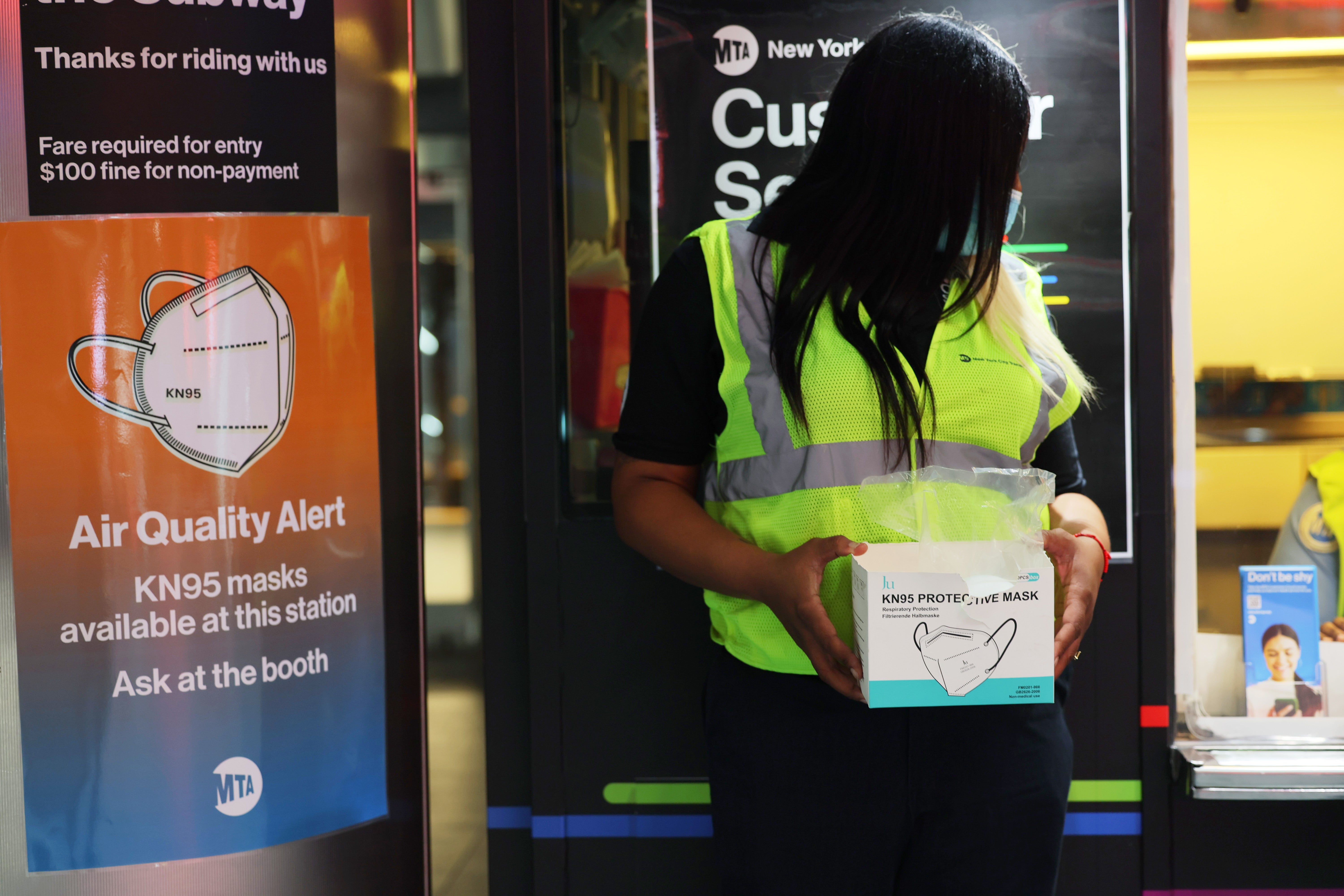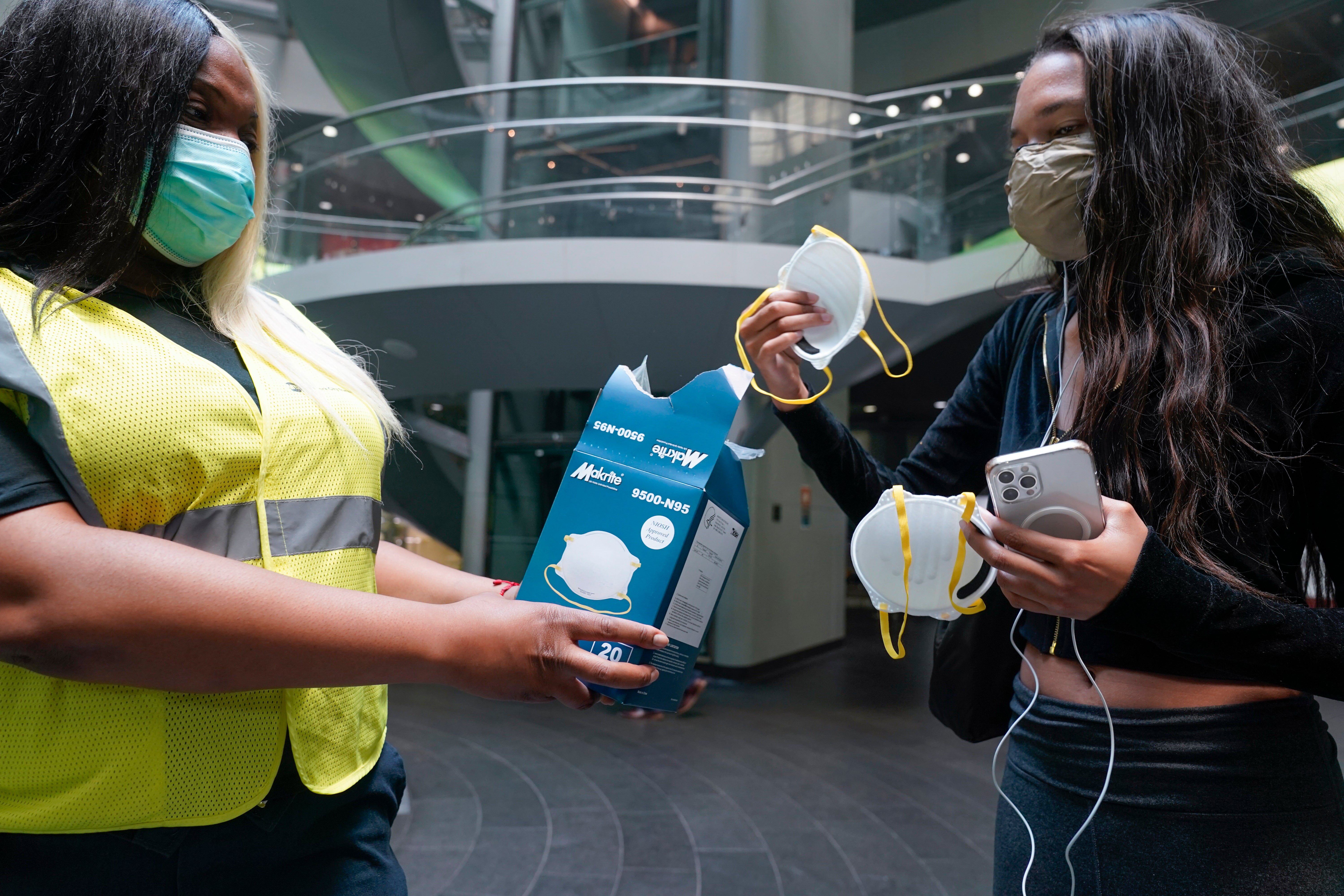
Under yellowed, ashen skies and wrapped up in the smell and taste of wet cigar, New Yorkers endured the city’s worst air quality in decades and briefly the worst globally on 7 June, as wildfire smoke from Canada drifted along the East Coast and created hazardous and unhealthy conditions for millions of people.
By late afternoon, New York City’s air quality index, or AQI, reached more than 400, a measurement of various air pollutants on a scale that goes up to 500. For comparison: last weekend’s measurements hovered around 30. Roughly 24 hours later, the index had dropped to roughly 160.
It was bad above ground, but it may have been even worse down below.
A team of researchers with New York University studying air quality monitored the particulate matter, or PM2.5, in the city’s subways on 7 June. The city typically gives off a reading of roughly 12 micrograms of particles per cubic meter volume of air.
Their readings at the entrance of the Broadway-Lafayette station in Manhattan reached 612, according to Gothamist. On the platform down below, the readings reached 660.
For this reporter, the stinging smell of smoke and pollutants was as pronounced at the Hoyt-Schemerhorn platform in Brooklyn that night than above ground in midtown Manhattan that same afternoon.
At a Christopher Street station PATH platform that day, researchers clocked a particulate matter reading of 1,000, according to Gothamist. Inside a B train, those levels dropped to 350, which researchers noted was still extremely high.
Those figures are not to be confused with the air quality index, which measures particulate matter and ozone, among other pollutants.

A study published earlier this year found that subway riders waiting in stations near tunnels that run below the city’s rivers are exposed to higher levels of hazardous pollutants than in other stations, a so-called “river-tunnel effect” that likely explains the frequently poor air quality in the nation’s largest underground transit system – likely made worse by a days-long plume of wildfire smoke.
Another study from NYU Grossman School of Medicine found varied pollutant levels across the city’s subways, with some rating a few times higher than outdoor air while others were closer to contaminated air readings from wildfires and building demolitions.

There was a small spike in emergency room visits for asthma and wheezing on 7 June, when the city’s air quality dropped to hazardous levels.
New York’s Department of Health reported 309 emergency room visits in which the chief complaint was asthma, wheezing or chronic obstructive pulmonary disorder. By comparison, the department typically reports roughly 135 to 200 visits for such cases.
The jump marks the highest number of asthma-related emergency room visits within the last year; on 23 May, 2022, the city recorded 339 asthma-related emergency room trips, aligning with the annual spike in tree pollen levels.
New York City Mayor Eric Adams, facing criticism for the city’s response to air pollution endangering millions of people as too little too late, said there was “no blueprint or playbook” for the crisis – other city officials were quick to point out that California has routinely faced similar conditions, and extensive guidance from the federal government is readily available.
Others pointed out the irony of the mayor’s plans to weaken a “right to shelter” mandate while urging people to remain indoors.
But the apparent scramble has underscored the accelerating, all-encompassing scope of the climate crisis, and a widening chasm between how governments are preparing and how fast conditions are declining.
New York Governor Kathy Hochul announced on 7 June that the state would freely distribute 1 million N95-style masks at travel hubs and public centres across the city.
In 2020, the Metropolitan Transportation Authority launched a pilot for air filtration systems that are intended to replace the air inside traincars a dozen times an hour. But those systems are installed in only a fraction of the fleet.
MTA Chief Safety and Security Officer Pat Warren said in a statement shared with The Independent that the agency is a “national leader in ensuring that air quality across trains and buses in the transportation network is protected by a multi-layered filtration system” that meets or exceeds professional standards.
“To augment that, during this air quality alert period, and in coordination with the State Department of Emergency Management, we are helping to distribute hundreds of thousands of N95 masks to the public,” he added.
As for that taste, it’s likely a misplaced sense of smell that results in the mouldy cigar-like feeling in New Yorkers’ mouths, according to University at Buffalo taste expert Kathryn Medler, a professor of biological sciences at the university’s College of Arts and Sciences.
“There is a wide range in the number of taste buds that we have on our tongues,” she said. “Children and some adults tend to have more and, as a result, they can have a more sensitive palette … It’s more likely that these people can actually taste smoke particles that are sticking in our mouths, and that taste profile is likely to be bitter or sour.”







